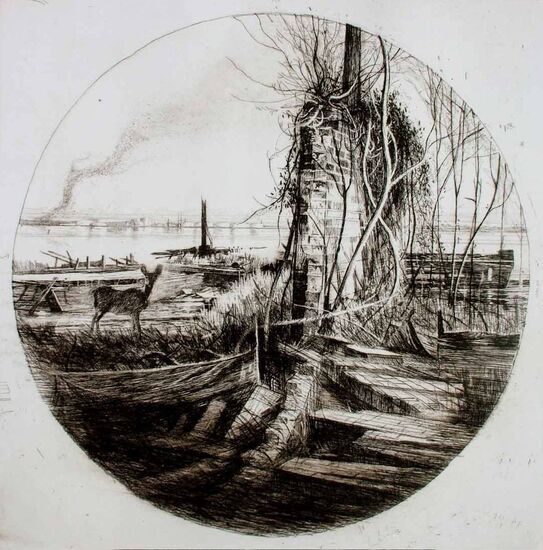Mary Cregan, author of "The Scar."
Page Turner / Edited by Peter McDermott
“Look who’s back among the living.”
That’s how Dick Cavett, referring to himself, greeted his wife sitting up in a hospital bed after his first experience with electroconvulsive therapy.
The talk-show host’s upbeat remembrance, however, is at odds with how our culture has us think of ECT. In her memoir “The Scar: A Personal History of Depression and Recovery,” Mary Cregan points to the disparity between the application of electricity during cardiac arrest in shows like “ER” and “Grey’s Anatomy” and the use of ECT on the main character in “Homeland” — one is seen to be heroic and life-saving, the other nightmarish and dreadful.
Her own story and her treatment “become the core of a larger investigation into the genetic and environmental roots” of depression, mourning and melancholia, ECT, the asylum, the development of anti-depressant drugs, recovery and resilience.
Preeminent American author Joyce Carol Oates has written: “‘The Scar’ is a memoir unique in my experience: intensely personal, warmly and unflinchingly intimate, yet wide-ranging, informative, even scholarly―beautifully and persuasively written. Unlike any other memoir I have read touching on psychological vulnerability and the risk of suicide, ‘The Scar’ reaches beyond its immediate subject to provide a cultural and historical context for that most mysterious of afflictions, ‘depression'― or, in more Romantic terms, 'melancholia'―making it particularly valuable at the present time.”
“‘The Scar’ is not a misery memoir,” Cregan told the Echo, “It is a personal story set within a larger, historical one of the difficulties in treating an illness whose neurophysiological pathways are still not understood.”
She added about her memoir, “It begins with the death of my first child, a girl named Anna, from a heart defect when she was two days old. Within three months I was suicidal, attempted suicide, and was hospitalized with a diagnosis of melancholic depression.”
Cregan said, “I wanted to write this book because I believe that many people don’t understand what the experience of severe depression feels like, nor do they understand why people might take their own lives under its influence. It’s important, given the life-threatening nature of this illness, that we recognize what’s happening to friends and loved ones, and encourage them to get treatment.”
The extended discussion of ECT takes place in a chapter entitled “How to Save a Life.” Cregan points to the enormous cultural influence of the 1975 film “One Flew Over the Cuckoo’s Nest” (the first in more than 40 years to win all five of the major Academy Awards), in which a lobotomy and ECT were presented as belonging the same repressive toolkit. The former, though, involved a devastating and irreversible mutilation, while the latter actually saves lives.
Ken Kesey, who wrote the original 1962 novel “One Flew Over the Cuckoo’s Nest,” had an undeniable truth to tell: ECT, writes Cregan, “was used as a form of punishment in state hospitals that warehoused helpless mentally ill patients.” But he and director Milos Forman frightened America with a scene of ECT without a muscle relaxant or anesthetic being administered (both routine since the mid-1950s). The movie’s viewpoint dovetailed with the anti-psychiatric movement associated with writers like the psychiatrist R.D. Laing.
Writer and poet Sylvia Plath’s first experience with ECT in the 1950s was without her informed consent (again something that’s long been required), but her autobiographical novel “The Bell Jar” paints a more complex picture of the treatment in the 1950s – one round of ECT was successful -- that some have preferred to ignore.
The idea behind ECT is not the shock as such but the inducement of a seizure and these days there’s almost nothing to see, the author reports – a mild tremor at most, something that wouldn’t provide much drama in a TV show or movie.
Cregan, who has been teaching literature and writing at Barnard College for more than 20 years, told the Echo something about her Irish roots. “My grandparents emigrated to Philadelphia in the 1920s—my mother’s parents from Galway and Mayo; my father’s from west Limerick,” she said. “At 16 my father’s father marched to Glenquin Castle with the Volunteers on Easter Sunday, 1916, and stayed with the republican forces until the end of the Civil War.
“The setting of my early life was very Irish, very Catholic,” Cregan added. “My husband is Jewish, and my son embraces his Jewish and Irish identities. He studied Irish in Ballyferriter and Carraroe, and his Irish is very good.”

Mary Cregan
Place of birth: Philadelphia
Spouse: James Shapiro
Children: Luke (22)
Residence: New York City
Published works: “The Scar” is my first book.
What advice do you have for aspiring writers?
Because I couldn’t write “The Scar” without exposing aspects of my life, I put it off for many years even though I really needed to come to terms with the loss and the illness. Writing is an excellent way to come to a clear understanding of whatever it is you want to figure out. So I would recommend writing for yourself, even when you don’t have a strong urge to publish. If you keep at it, the work may be good enough to publish after all.
I’ve worked with college students on their writing for many years. The most important thing I can teach them is to give themselves ample time for revision. Writing only gets better as you carve away the confused thinking and unclear sentences to reveal what’s really at stake.
Name three books that are memorable in terms of your reading pleasure
Gustave Flaubert, “Madame Bovary”; John McGahern, “All Will Be Well”; Anne Enright, “The Gathering.”
What book are you currently reading?
John Lanchester’s “The Wall.” I’ve recently read several excellent books by young Irish women—Caoilinn Hughes’s “Orchid and the Wasp,” Nicole Flattery’s “Show Them a Good Time” ; Emilie Pine’s “Notes to Self”; Sally Rooney’s “Normal People.”
Is there a book you wish you had written?
There are so, so many. One is Jenny Offill’s “Dept. of Speculation.”
What book changed your life?
Virginia Woolf’s “To the Lighthouse” was assigned in my first year of college. It had everything: style, depth, great beauty. Loss, human mortality, vulnerability, and the preciousness of passing time are starkly present in this beautiful, unforgettable novel.
What is your favorite spot in Ireland?
I was at UCC for a year when I was 20, and I visited my grandfather’s village of Errisbeg, just west of Roundstone in Connemara. Gorteen Strand was the most beautiful place I had ever seen. By now I’ve spent time on the Clare and Kerry coasts as well, but I still love Gorteen because of the family connection.
You're Irish if…
You like to gather people together. It’s great fun, these days when everyone is so busy, to sit down together and eat, drink, and talk for hours. If Irish friends are present, there will likely be singing, too.
For Honor Molloy's review of "The Scar" click here.








